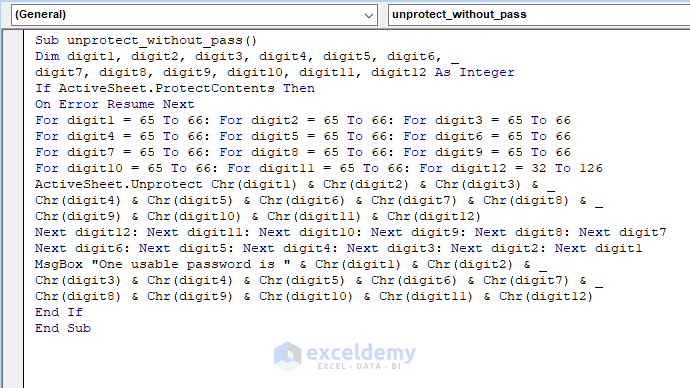Excel VBA: Export Sheets Without References Easily

Have you ever needed to export specific sheets from an Excel workbook, but found the process a bit daunting due to the presence of references or dependencies? This post will guide you through how to use Excel VBA (Visual Basic for Applications) to efficiently export sheets without the hassle of external references or links. Whether you're managing data, sharing information, or just trying to simplify your workbook, understanding how to automate this process will significantly enhance your Excel capabilities.
Understanding Workbook References

Before diving into the VBA code, it’s important to understand what workbook references are:
- External References: Links to cells in other workbooks.
- Named Ranges: Defined names that can point to external sources.
- Pivot Table Data Sources: These often point to external data which might not be needed in the exported sheets.
📌 Note: Identifying and understanding these references can help in creating a cleaner, more self-contained exported workbook.
Setting Up Your Environment

Here are the steps to prepare your Excel environment for VBA:
- Open Excel and press ALT + F11 to open the VBA editor.
- Go to
Tools>Referencesand ensure ‘Microsoft Excel 16.0 Object Library’ is checked.
Export Sheets Without References: VBA Code

The following VBA script will:
- Create a new workbook without external links.
- Copy the specified sheets to this new workbook.
- Save the new workbook at a specified location.
Sub ExportSheetsWithoutReferences()
Dim wbNew As Workbook
Dim wsCopy As Worksheet
Dim wsTarget As Worksheet
Dim rngCell As Range
Dim strSheetName As String
'Create a new workbook
Set wbNew = Workbooks.Add
'Loop through desired sheets
For Each wsCopy In ThisWorkbook.Sheets(Array("Sheet1", "Sheet2", "Sheet3"))
wsCopy.Copy After:=wbNew.Sheets(wbNew.Sheets.Count)
Next wsCopy
' Remove all external links
With wbNew
.UpdateLinks = xlUpdateLinksNever
On Error Resume Next
.BreakLink Name:="", Type:=xlExcelLinks
On Error GoTo 0
' Loop through each sheet in the new workbook
For Each wsTarget In .Worksheets
' Clear any formulas that might reference external workbooks
For Each rngCell In wsTarget.UsedRange
If rngCell.HasFormula Then
rngCell.Value = rngCell.Value
End If
Next rngCell
Next wsTarget
End With
'Save the new workbook
wbNew.SaveAs "C:\Your\Path\Here\ExportedWorkbook.xlsx"
wbNew.Close False
MsgBox "Sheets have been exported successfully to the specified location."
End Sub
📌 Note: You might need to adjust the sheet names in the Array("Sheet1", "Sheet2", "Sheet3") to match your workbook.
Advantages of Using VBA for Exporting

- Automation: Speeds up repetitive tasks.
- Consistency: Ensures that exported data is always in the same format.
- Minimized Errors: Reduces human errors in manual copying.
- No Extra References: Leaves behind external links, making the file more portable.
Common Pitfalls and Solutions

Here are some common issues you might encounter and how to solve them:
- Formula Dependence: If sheets depend on each other, breaking links might disrupt calculations.
- Solution: Ensure you’re only exporting sheets that are self-contained or can work independently.
- Data Loss: Converting formulas to values might lead to loss of dynamic data.
- Solution: Backup the original workbook before running the VBA script.
Now, having walked through the process of exporting sheets using VBA, you have the tools to create more manageable and shareable Excel files. This technique not only simplifies sharing data but also ensures that your exported workbooks are cleaner, reducing potential issues with external references. By following these steps and understanding the underlying VBA code, you can tailor this process to fit various data management needs, making your workflow more efficient and error-free.
Can I export all sheets using this VBA script?

+
Yes, you can modify the script to loop through all sheets in the workbook by changing the array to ThisWorkbook.Sheets instead of specifying individual sheet names.
What if my exported workbook needs to keep some references?

+
You can modify the VBA script to exclude specific sheets or formulas from being altered or to retain some links while still removing others based on your criteria.
How can I ensure that VBA code runs on others’ machines?

+
Ensure that all users have macro-enabled Excel files and have macros enabled in their Excel settings. Also, consider distributing the script within a macro-enabled workbook.



